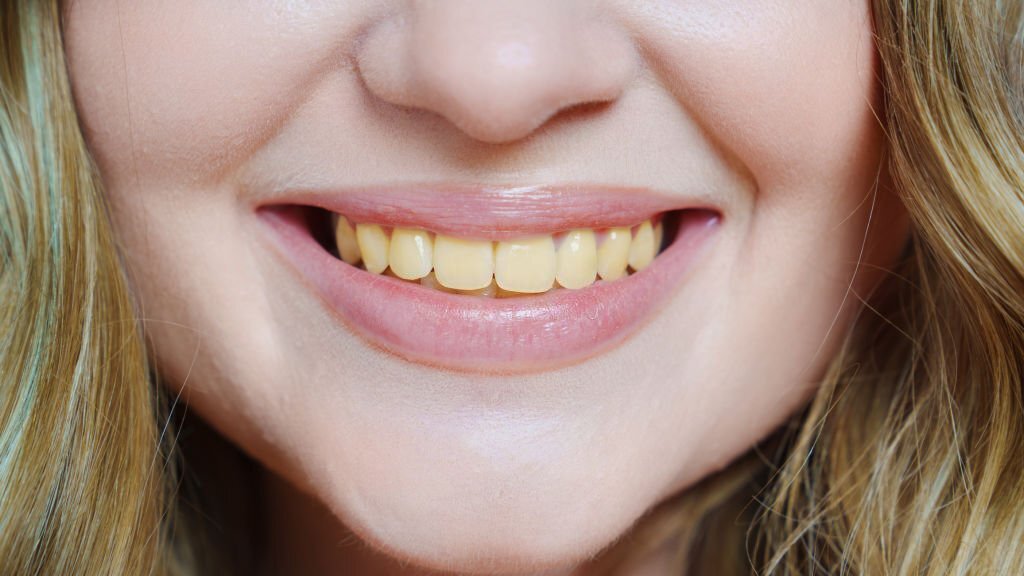Introduction
A bright, white smile is often associated with good health, attractiveness, and confidence. However, various factors can lead to teeth discoloration, including smoking and other harmful habits. Smoking, along with certain lifestyle choices and dietary habits, can significantly impact the color of our teeth, causing them to become yellow, brown, or even grayish in appearance. In this blog, we will explore the impact of smoking and other harmful habits on teeth color, understand how these habits cause discoloration, and discuss the importance of breaking such habits for maintaining a bright and healthy smile.
The Anatomy of Teeth Color
To understand how smoking and harmful habits affect teeth color, it is essential to grasp the anatomy of our teeth. The outermost layer of our teeth is called enamel—a hard, protective covering that is translucent in nature. Beneath the enamel lies the dentin—a yellowish, calcified tissue. The color of our teeth is influenced by the reflection and scattering of light off the enamel and the color of the dentin underneath.
Factors That Cause Teeth Discoloration
Several factors contribute to teeth discoloration, ranging from intrinsic to extrinsic causes:
Intrinsic Factors:
Intrinsic discoloration occurs when the inner structure of the tooth—the dentin—becomes discolored or darkened. Causes of intrinsic discoloration include dental trauma, certain medications during tooth development, and excessive exposure to fluoride during childhood.
Extrinsic Factors:
Extrinsic discoloration affects the outer surface of the teeth—the enamel—and is caused by external substances coming into contact with the teeth. Common causes of extrinsic discoloration include smoking, consuming certain foods and beverages, and poor oral hygiene.
The Impact of Smoking on Teeth Color
Smoking is one of the leading contributors to teeth discoloration, and its effects are mainly attributed to both intrinsic and extrinsic factors. The harmful chemicals present in tobacco products, such as nicotine and tar, can cause profound and lasting damage to teeth appearance.
Tar and Staining:
Tar is a dark, sticky substance found in tobacco smoke. When smokers inhale, the tar particles adhere to the enamel of the teeth, causing stubborn stains that are difficult to remove.
Nicotine and Yellowing:
Nicotine, the addictive component of tobacco, is a colorless substance. However, when it comes into contact with oxygen, it transforms into a yellowish substance. Smokers who inhale nicotine-rich smoke often develop yellowish stains on their teeth.
Reduced Saliva Production:
Smoking reduces saliva production, leading to a dry mouth. Saliva plays a crucial role in neutralizing acids and removing food particles from the mouth. A dry mouth increases the risk of plaque buildup and accelerates teeth discoloration.
Increased Bacteria Growth:
Smoking compromises the immune system in the mouth, making it more susceptible to bacterial growth. Bacteria can produce acids that erode the enamel and contribute to discoloration.
Delayed Healing:
Smoking can slow down the healing process, making it harder for oral tissues to recover from damage caused by plaque, gum disease, or injuries.
Gum Disease:
Smoking is a significant risk factor for gum disease, which can cause gum recession and further expose the darker dentin beneath the enamel, leading to more visible discoloration.

The Impact of Other Harmful Habits on Teeth Color
While smoking is a primary cause of teeth discoloration, other harmful habits and lifestyle choices can also contribute to teeth stains:
Chewing Tobacco:
Chewing tobacco exposes the teeth and gums to harmful chemicals, causing similar staining and oral health issues as smoking.
Excessive Coffee and Tea Consumption:
Coffee and tea contain dark pigments that can stain the enamel over time, leading to brown or yellowish discoloration.
Red Wine:
Red wine is acidic and contains tannins, which can lead to teeth staining and enamel erosion.
Cola and Dark Beverages:
Cola and other dark-colored beverages contain high levels of sugar and acids that can contribute to teeth discoloration and decay.
Poor Oral Hygiene:
Inadequate brushing, flossing, and regular dental check-ups can lead to the buildup of plaque and tartar, causing extrinsic discoloration and compromising oral health.
Breaking Harmful Habits for a Brighter Smile
Breaking harmful habits can be challenging, but it is essential for improving teeth color and overall oral health. Here are some steps to help you break free from harmful habits and maintain a bright smile:
Seek Support:
If you are struggling to quit smoking or other harmful habits, seek support from friends, family, or healthcare professionals. They can provide encouragement and resources to help you quit.
Substitute Habits:
Replace harmful habits with healthier alternatives. For example, chew sugar-free gum or snack on fruits and vegetables instead of reaching for tobacco or sugary foods.
Professional Help:
Consider seeking professional help, such as counseling or support groups, to address the underlying factors that contribute to harmful habits.
Improve Oral Hygiene:
Practice good oral hygiene by brushing your teeth at least twice a day, flossing daily, and scheduling regular dental check-ups and cleanings.
Use Whitening Products:
For those who have quit smoking or reduced their consumption of stain-causing substances, teeth whitening products can help remove stubborn stains and restore the brightness of your smile. However, it is essential to consult a dentist before using any whitening products to ensure safety and efficacy.
Conclusion
Smoking and other harmful habits can have a significant impact on teeth color, leading to discoloration, staining, and potential oral health issues. The chemicals present in tobacco products, along with the dark pigments found in certain foods and beverages, can stain the enamel and compromise the overall appearance of your smile. Breaking harmful habits and adopting a healthier lifestyle is essential for improving teeth color and promoting overall oral health.If you are struggling with harmful habits and their impact on your teeth, seek support and professional help to overcome these challenges. Quitting smoking, reducing your intake of stain-causing substances, and maintaining good oral hygiene can go a long way in restoring the brightness of your smile and preserving the health of your teeth and gums. Remember, a bright, healthy smile is a reflection of your well-being and self-care, so take the necessary steps to achieve the smile you deserve.


